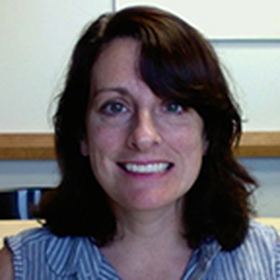

312 Church Street
Minneapolis, MN 55455
United States
Wendy
Gordon
Our lab is interested in how cell surface receptors convert signals from extracellular stimuli like mechanical force into a biological response, as dysregulation in a cell’s force-sensing ability can lead to disease. We use X-ray crystallography and other biophysical methods to ask what “mechanosensors” look like in order to understand the range of structures nature uses to sense forces of different magnitudes and in different contexts, and hopefully identify potentially novel therapeutic targets.
Research interests
Our lab is interested in how cell surface receptors convert signals from extracellular stimuli like mechanical force into a biological response, as dysregulation in a cell’s force-sensing ability can lead to disease. We use X-ray crystallography and other biophysical methods to ask what “mechanosensors” look like in order to understand the range of structures nature uses to sense forces of different magnitudes and in different contexts, and hopefully identify potentially novel therapeutic targets. We also use and develop single molecule and cell-based assays based on magnetic tweezers to apply forces to mechanosensors to probe how mechanosensors are converted from an “off” to “on” state. We measure both magnitudes of forces to effect a biological response and are developing methods to probe the corresponding structural changes that occur. Finally, we are developing general signaling assays to help us map mechanosensor domains, understand differences between on and off states, and search for new potential mechanosensors.
Selected publications
Hayward AN, Aird EJ, Gordon WR. Harnessing Notch signaling to decode mechanisms of proteolytic regulation in diverse cell-surface receptors, submitted
Preprint: bioRxiv 436592
Hayward AN, Gordon WR. Dystroglycan proteolysis is conformationally-regulated and disrupted by disease-associated mutations. in revision,
Preprint: bioRxiv 279315
Aird EJ, Lovendahl KN, St Martin A, Harris RS, Gordon WR. (2018). Increasing Cas9-mediated homology-directed repair efficiency through covalent tethering of DNA repair template.
Commun Biol.-Nature 2018 May 31;1:54. doi: 10.1038/s42003-018-0054-2.
Lovendahl KN, Blacklow SC, Gordon WR. (2018) The Molecular Mechanism of Notch Activation. Adv Exp Med Biol. 2018;1066:47-58. doi: 10.1007/978-3-319-89512-3_3.
Mix LT, Carroll EC, Morozov D, Pan J, Gordon WR, Philip A, Fuzell J, Kumauchi M, van Stokkum I, Groenhof G, Hoff WD, Larsen DS. (2018) Excitation-Wavelength-Dependent Photocycle Initiation Dynamics Resolve Heterogeneity in the Photoactive Yellow Protein from Halorhodospira halophila. Biochemistry. 2018 Mar 20;57(11):1733-1747. doi: 10.1021/acs.biochem.7b01114.
Lovendahl KN, Hayward AN, Gordon WR. (2017) Sequence-Directed Covalent Protein-DNA Linkages in a Single Step Using HUH-Tags. J Am Chem Soc. 24;139(20):7030-7035. doi: 10.1021/jacs.7b02572. F1000 Recommended. Featured in JACS Junior Investigator Special Issue.
Gordon WR, Zimmerman B, He L, Miles LJ, Huang J, Tiyanont K, McArthur DG, Aster JC, Perrimon N, Loparo JJ, Blacklow SC. (2015) Mechanical Allostery: Evidence for a Force Requirement in the Proteolytic Activation of Notch. Dev Cell. 33(6):729-36. doi: 10.1016/j.devcel.2015.05.004.
F1000 Recommended.